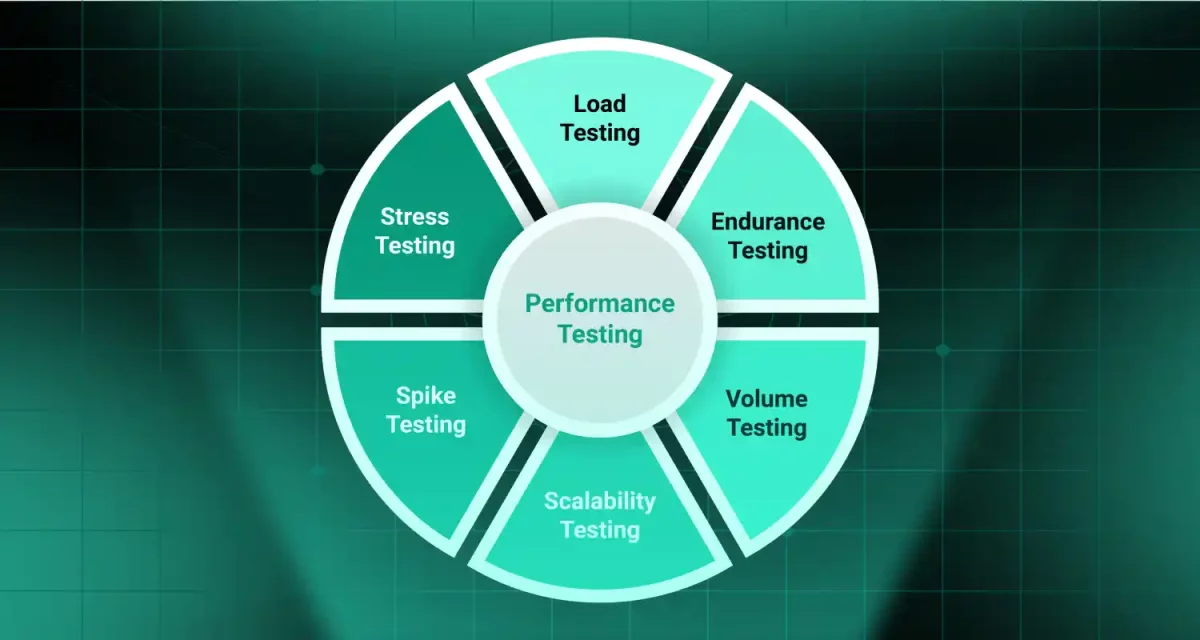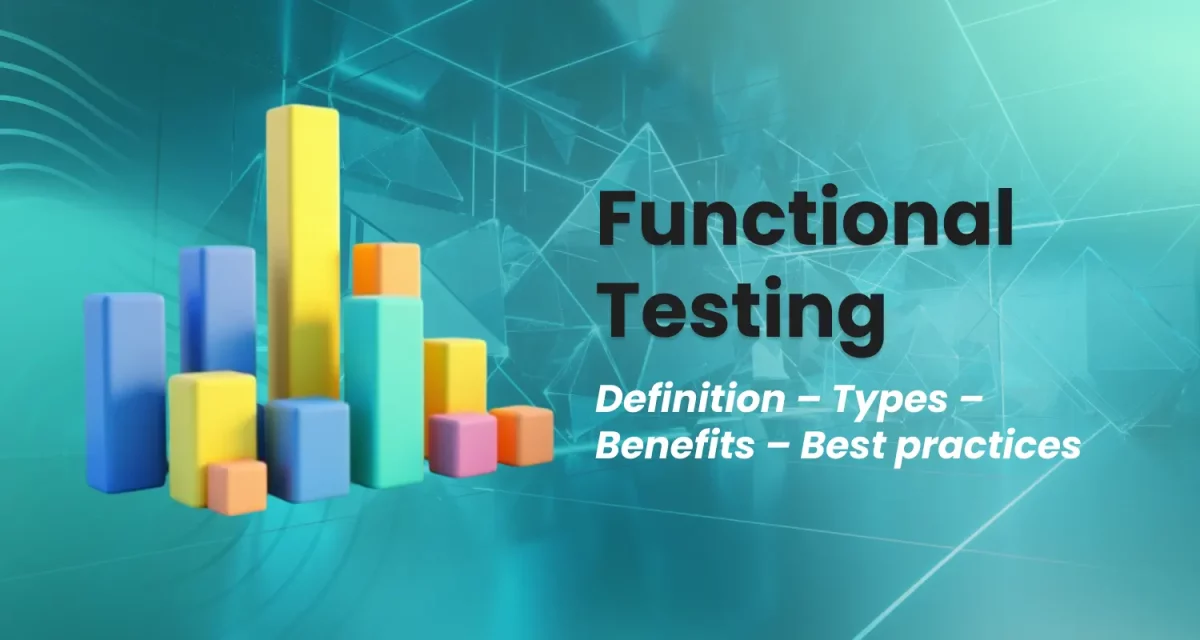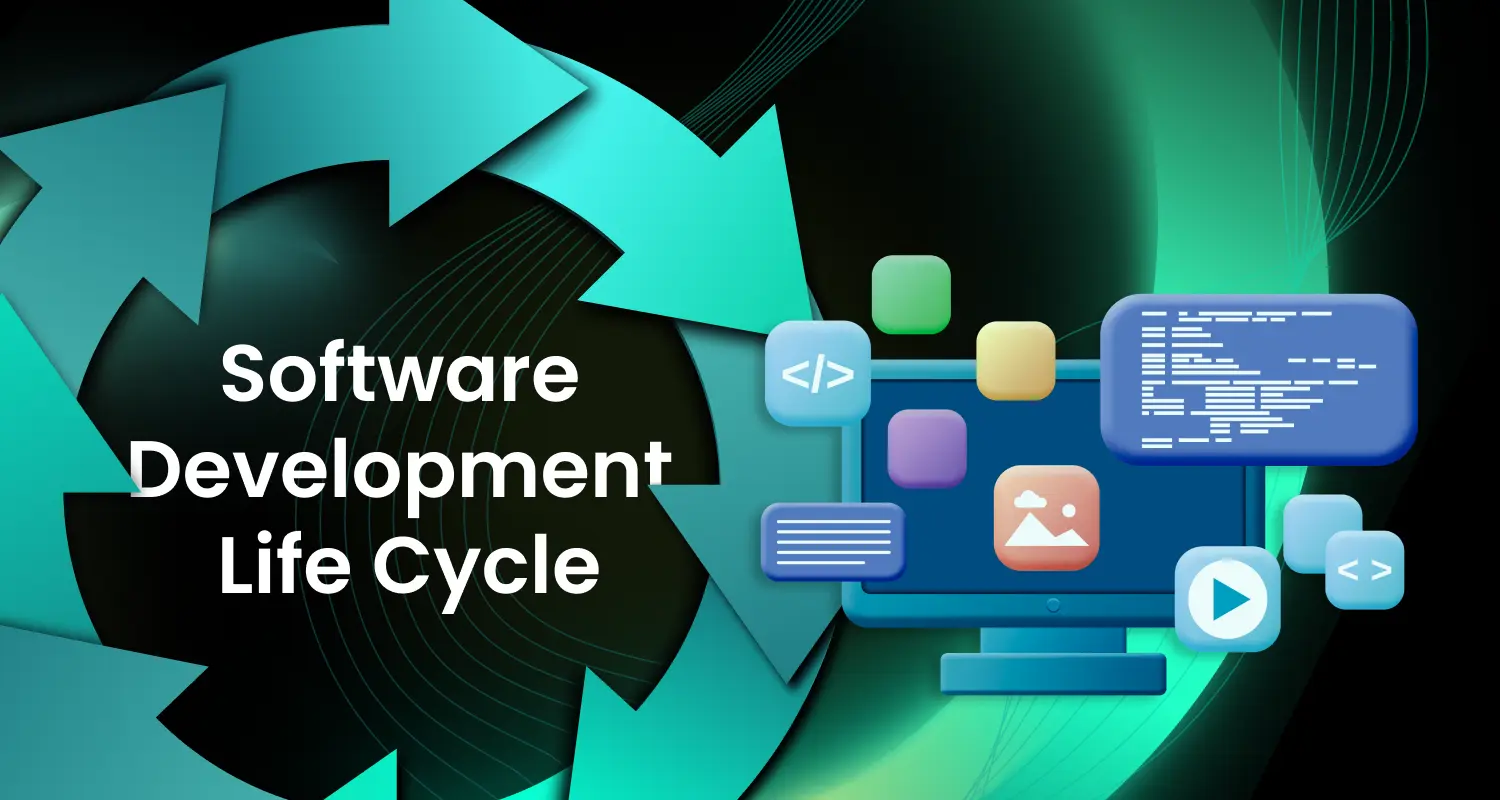
The Software Development Life Cycle (SDLC) is a structured process that guides software development teams from initial planning to final deployment and maintenance. Understanding the SDLC phases ensures efficiency, cost-effectiveness, and high-quality software products.
Organizations can streamline their software development process and mitigate risks by selecting the appropriate SDLC model. A well-defined Software Development Life Cycle provides a clear roadmap for system development, ensuring consistency and standardization.
Whether working on small applications or enterprise-level solutions, structured process models like Agile methodology, Waterfall model, or Spiral model help maintain project integrity.
1. What is the software development life cycle?
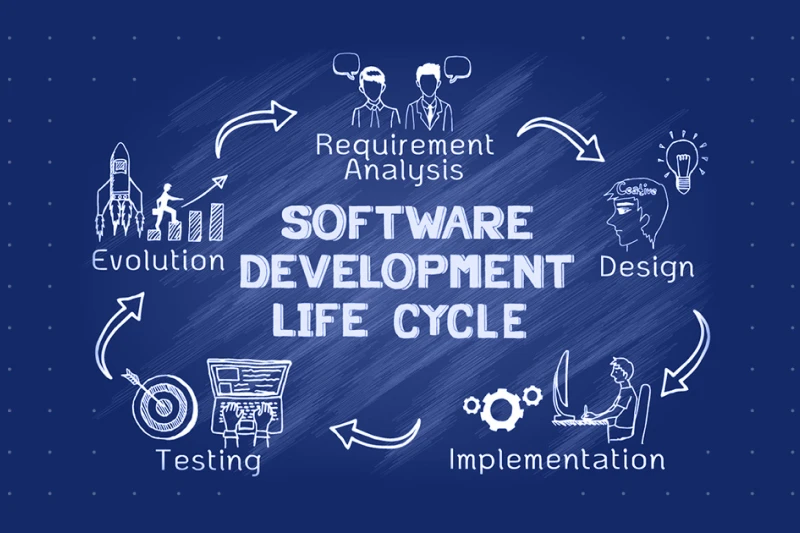
1.1. Definition
The Software Development Life Cycle (SDLC) is a systematic approach to software development that outlines the stages required to create a fully functional and high-quality software product. It provides a framework that software engineering teams follow to ensure consistency, efficiency, and quality throughout development.
The primary purpose of SDLC is to streamline the software development process, minimize risks, reduce costs, and ensure the final product meets business and user requirements. By establishing well-defined phases, SDLC helps organizations avoid pitfalls such as poor planning, inefficient resource allocation, security vulnerabilities, and software defects.
1.2. Importance of SDLC in delivering quality software projects
The benefits of SDLC in software development are numerous. A successful software project requires detailed planning, collaboration, and monitoring. The Software Development Life Cycle (SDLC) ensures that projects meet quality standards and business goals.
- Enhances project planning and lifecycle management
SDLC establishes a clear roadmap, breaking down complex projects into manageable phases. This structure makes it easier for teams to predict timelines, estimate costs, and allocate resources efficiently. Well-defined goals and milestones provide clarity and prevent scope creep.
With comprehensive planning, potential risks are identified early, and contingency plans are developed. Progress tracking becomes more streamlined with tools like Gantt charts, Kanban boards, and milestone reports. Project managers can make data-driven decisions to ensure timely delivery.
- Ensures efficient resource allocation and risk management
By identifying potential risks during the early stages, SDLC helps devise effective mitigation strategies. Organizations can make informed decisions about resource allocation, minimizing budget overruns and timeline delays.
Risk management plans developed in the planning phase are revisited throughout the project.
Efficient resource allocation involves assigning developers, testers, and designers based on their skill sets. Resource leveling and smoothing are applied to avoid bottlenecks and ensure balanced workloads.
- Facilitates better collaboration
SDLC encourages collaboration among cross-functional teams, including developers, testers, business analysts, and stakeholders. Open communication channels improve clarity on project goals, minimizing misunderstandings and inefficiencies. Tools such as project management software and collaboration platforms facilitate seamless coordination.
Regular meetings, sprint reviews, and feedback sessions ensure alignment across teams. Stakeholders are also actively involved during each phase, ensuring the final product meets business objectives.
- Improves quality assurance
Continuous testing and verification at each phase ensure early defect detection. Automated and manual testing techniques are applied to maintain performance, security, and reliability. Quality assurance processes like peer code reviews, automated testing, and performance monitoring are integrated into the SDLC.
Furthermore, quality metrics such as defect density, test coverage, and code churn are monitored. By implementing a robust quality management system, organizations can ensure software reliability.
- Compliance with industry standards
Adhering to an SDLC model ensures that the software complies with industry regulations and security protocols. This is especially critical for healthcare, finance, and e-commerce sectors, where data security and regulatory compliance are essential.
The design and testing phases incorporate industry standards such as ISO, IEC, and GDPR. Compliance audits and regular assessments further ensure regulatory adherence.
Want to Integrate Powerful IT Solutions into Your Business?
We provide tailored IT solutions designed to fuel your success. Let`s map out a winning strategy. Starting with a free consultation.
Contact Us2. Phases of the software development life cycle
SDLC consists of well-defined stages that form a systematic path from idea generation to product deployment and maintenance.
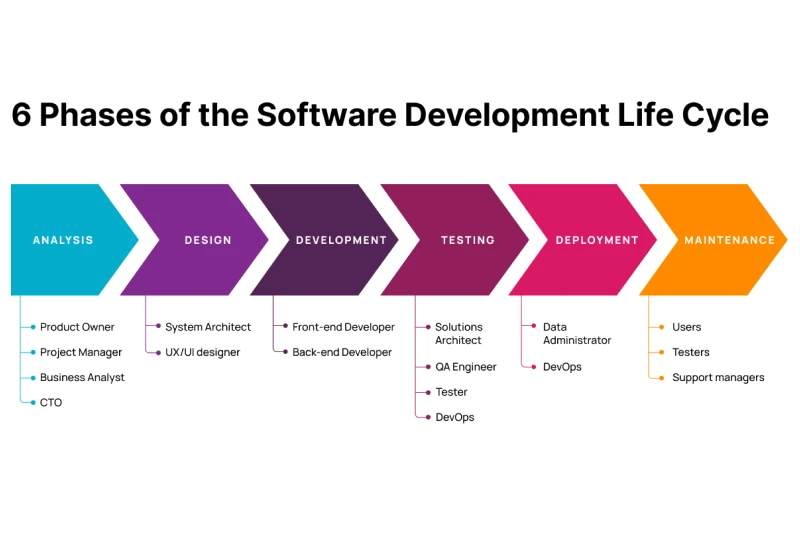
2.1. Planning and requirement analysis
The planning phase involves gathering input from stakeholders to define project objectives, timelines, and budgets. Business analysts and project managers conduct feasibility studies to assess the project’s technical, operational, and financial viability.
Key activities include:
- Identifying business needs and defining project scope.
- Conducting risk assessments and feasibility studies.
- Estimating costs and setting realistic timelines.
- Establishing communication protocols and defining key deliverables.
- Prioritizing features using MoSCoW (Must-Have, Should-Have, Could-Have, Won’t-Have) analysis.
2.2. System design
In this phase, architects and developers create a detailed design blueprint based on the requirements. This includes high-level system architecture, database design, and user interface specifications.
Key activities include:
- Developing architectural diagrams.
- Creating data models and defining system components.
- Outlining security protocols and compliance standards.
- Establishing coding guidelines, frameworks, and best practices.
- Prototyping to visualize core functionalities.
2.3. Implementation (Coding)
Using suitable programming languages and frameworks, developers write code based on the approved design. Agile teams often follow iterative coding processes, ensuring flexibility and faster feedback loops.
Key activities include:
- Writing clean, maintainable code using version control systems.
- Conducting code reviews for quality assurance.
- Implementing security measures and error handling.
- Integrating external APIs, third-party services, and databases.
- Applying CI/CD pipelines for seamless code deployment.
2.4. Testing
Testing is a crucial phase that ensures the software is free of bugs and meets functional and performance standards. Testers perform unit, integration, system, and acceptance testing using automated and manual techniques.
Key activities include:
- Creating detailed test cases and test scripts.
- Identifying, documenting, and reporting defects.
- Conducting performance, load, and security testing.
- Ensuring compatibility across devices, operating systems, and browsers.
- Performing regression testing after bug fixes.
2.5. Deployment
Upon successful completion of testing, the software transitions to live deployment. Deployment strategies, including phased rollouts, big-bang releases, or rolling updates, can vary.
Key activities include:
- Configuring production servers and environments.
- Implementing CI/CD (Continuous Integration/Continuous Deployment).
- Monitoring system behavior using DevOps tools.
- Collecting user feedback for future enhancements.
- Establishing rollback plans for emergency fixes.
2.6. Maintenance
Maintenance involves ensuring the software remains functional and secure over time. Based on user feedback, regular updates, bug fixes, and performance optimizations are implemented.
Key activities include:
- Providing customer support and troubleshooting assistance.
- Monitoring software performance using analytics tools.
- Implementing patches, updates, and security fixes.
- Conducting routine audits and preventive maintenance.
- Gathering feedback for continuous improvement.
Looking for a Tech Partner Who Delivers Real Results?
We provide tailored IT solutions designed to fuel your success. Let`s map out a winning strategy. Starting with a free consultation.
Connect with an Expert3. Models of the software development life cycle
Understanding the various types of SDLC models is critical to choosing the correct one for your project. Different SDLC models cater to various project needs. A comprehensive knowledge of these SDLC methodologies facilitates the selection of the optimal methodology.
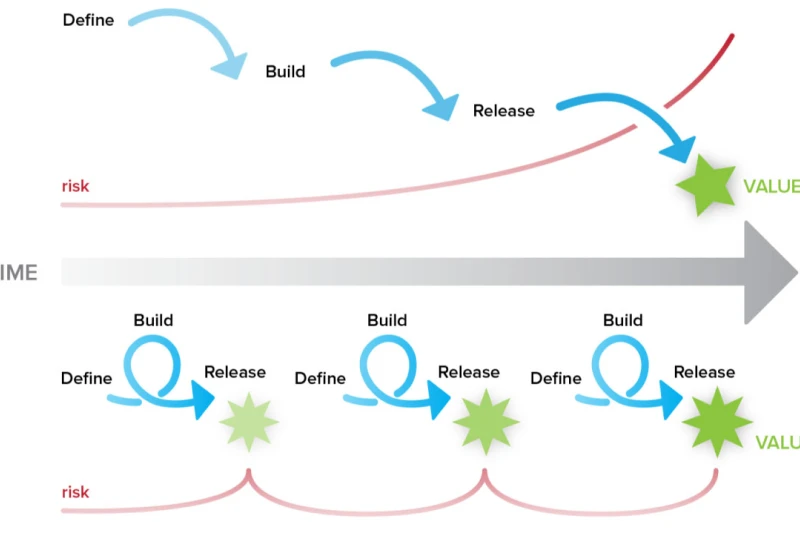
- Waterfall model
In the Waterfall Model, development progresses in a strict, step-by-step order, requiring the completion of one stage before initiating the subsequent one. It is best suited for projects with well-defined and stable requirements where changes are minimal.
- Agile model
The Agile Model promotes iterative and incremental development, emphasizing flexibility, collaboration, and continuous feedback. It is ideal for projects with evolving requirements, ensuring rapid adjustments and high adaptability.
Read more >>> What is Scrum in Agile software development?
- Spiral model
The Spiral Model integrates iterative development with risk assessment. It is designed for large-scale and high-risk projects, ensuring systematic risk management and continuous improvements at each phase.
- V-model
The V-Model (Verification and Validation Model) extends the Waterfall Model, where testing occurs in parallel with development. It is suitable for projects requiring strict quality control and regulatory compliance.
- Iterative model
The Iterative Model follows a repetitive cycle of development and refinement, where initial versions are continuously improved based on feedback. This method proves advantageous when project demands are subject to frequent alteration.
- Prototype model
The Prototype Model involves building an early working prototype to gather user feedback and refine requirements. This model is beneficial for highly interactive applications that require extensive user involvement.
- RAD (Rapid application development) model
The RAD Model focuses on quick development through rapid prototyping and user feedback. It is best for projects that demand fast delivery and continuous iterations.
- Incremental model
The Incremental Model builds the software in multiple increments, where each phase adds new features. This model is ideal for large projects requiring phased releases.
- Big Bang model
The Big Bang Model does not follow a structured plan; development begins with minimal formalities. It is suitable for small-scale or experimental projects where requirements are highly fluid.
4. How to select SDLC methodology?
Selecting the most appropriate Software Development Life Cycle (SDLC) model is essential for a project’s success. Several elements influence selection, such as:
- Project size and complexity: Large and complex projects often require structured and iterative models, such as Spiral or Incremental, ensuring continuous refinement and risk management.
- Requirement stability: The Waterfall model is suitable if requirements are well-defined and unlikely to change. However, Agile provides the flexibility needed to accommodate changes for projects with evolving requirements.
- Time constraints: When rapid development and quick iterations are necessary, models like Rapid Application Development (RAD) and Agile are highly effective in meeting tight deadlines while ensuring product quality.
- Risk management needs: Projects with high risks, such as those involving cutting-edge technologies or large-scale enterprise systems, benefit from the Spiral model, which prioritizes risk assessment and iterative improvements.
- Customer involvement: Agile and Prototype models are ideal if user feedback and active customer participation are critical. These models promote regular feedback loops and adjustments based on user insights, ensuring higher satisfaction.
Choosing an SDLC model that aligns with the project’s unique requirements is essential to the success of the project.
Looking for a Tech Partner Who Delivers Real Results?
We provide tailored IT solutions designed to fuel your success. Let`s map out a winning strategy. Starting with a free consultation.
Connect with an Expert5. Conclusion
The Software Development Life Cycle serves as the foundation for delivering successful software projects. Understanding its phases and models ensures better planning, collaboration, and quality assurance. Businesses can reduce risks, enhance productivity, and meet customer expectations by choosing the most appropriate SDLC model.
- Assess your project’s complexity, timeline, and resource availability.
- Engage stakeholders and gather detailed requirements to minimize uncertainty.
- Select the SDLC model that aligns with your project’s goals.
- Implement continuous testing and validation to maintain software quality.
- Monitor project progress using project management tools to ensure timely delivery.
- Be adaptable and prepared to shift to a different model if the project needs to evolve.
Evaluate your project needs carefully and align the SDLC model with your goals for long-term success.



